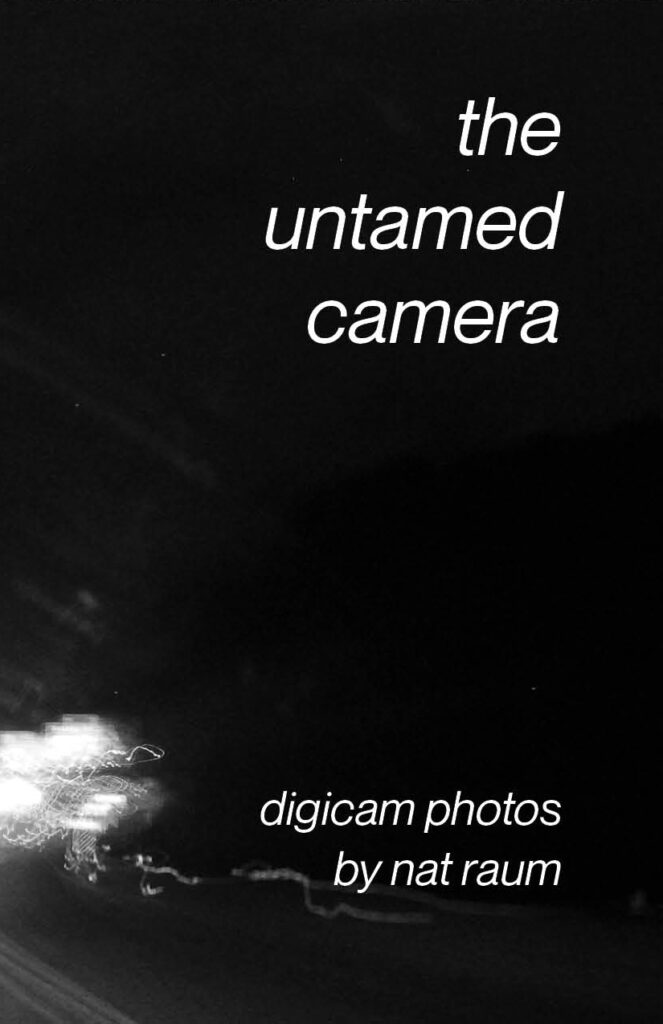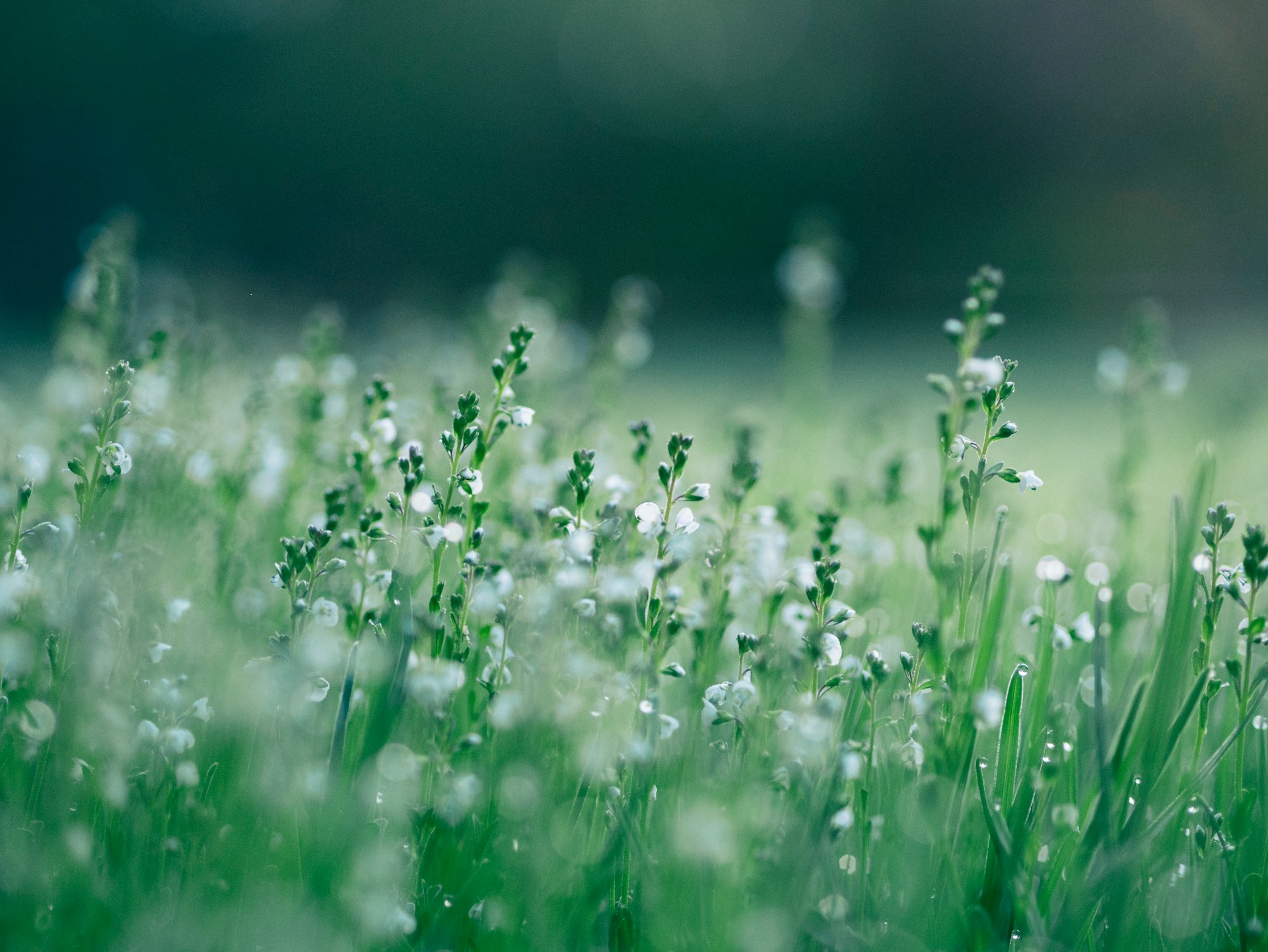by mk zariel

Two photos are overlaid on one another — like a scrapbook or maybe a decaying family album — one of white and brown autumn leaves falling and touching down on dewy grass and another of fire slowly consuming wood. The color scheme of ghostly white leaves and wood remains the same, but otherwise, the photos appear utterly irrelevant yet linked, harmonious in their disorder. They are not the sensationalistic photography and aesthetic wallpapers standard on Instagram and Unsplash; instead, they are refreshingly liminal, joined together by the negatingly ordinary.
nat raum’s 2024 self-published photography zine the untamed camera focuses on moments of everyday disorder — an abandoned drink on a coffee table, a hat bearing the slogan “Today Satan,” a lawn chair covered in snow, a window casting shadows, a set of wind chimes photographed from below against a pitch-dark background, overgrown and vibrantly colorful plants, a ruined phone booth, spilled paint on a sidewalk, a blurred photo of traffic, an outdated laptop, a faded rose. raum, a trans and disabled poet who is also the editor in chief of trans liberationist publishing house Fifth Wheel Press, has created four other photographic zines; this one is the least conceptual and most rooted in their reality, simply billed as a collection of “digicam photographs from graduate school.” Having recently earned their MFA in creative writing from the University of Baltimore, raum chronicled their education and its emotional undercurrents through pictures of their everyday life — a practice that birthed this photographic ode to generative, liminal chaos.
raum’s first full spread of photos plays with the ideas of mediation and vision — displaying a closed window and a reflecting pool in various shades of grey. Beside them lies an image of an abandoned tree, this one in screaming color. In contrast with one another, the images almost seem to represent two ways of experiencing the world, one an attempt to observe, the other an unmediated experience. The next page displays vignettes from home, such as soda cans and an ironic hat, but then the book rapidly shifts to photos of found art. However, all of it portrays the liminal spaces that raum inhabited during their grad school years, the home and the sidewalks, the dimly lit art museum, all of it refreshingly raw and vulnerable. Nothing appears staged or even like an intentional photoshoot; the photos shine with the radiance of the everyday and invitingly disordered.
Seemingly a slice of life, this small zine of photos actually has significant trans-liberationist subtext. Portraying liminal spaces, such as the home and sidewalk, as visually appealing and necessary, the untamed camera effortlessly evokes the liminality queer and trans people such as raum may feel when faced with linear time. As writer and musician Sara Jaffe put it in JSTOR Daily: “Queerness is constituted by its difference from conventional imperatives of time. […] The literature and gender scholar Kathryn Bond Stockton suggests that the very ways we understand “growth” are predicated on a legible and linear concept of maturation that many queer kids do not experience.” Thus, to be trans is to exist in a liminal space without traditional milestones, growth, and rites of passage —rather than existing in the hallowed halls of achievement and recognition, trans people inhabit the sidewalks and gardens of illegible life. raum’s zine can, in a certain light, be interpreted as an extended metaphor for the joyous alienation of transness.
As raum’s zine wraps up, the photos depict disorderly scenes that have a certain harmony to them, contrasting nature’s wildness with similar occurrences in human-made spaces.
Wildflowers side-by-side with a collapsed phone box, a verdant green plant next to a collection of stickers, and then a blurry traffic photo next to a clear one of an outdated computer adorn the final pages. The zine closes out with a scene of a cityscape at sunset next to one of a pristine, pressed flower. raum’s last few pages show that liminal spaces, like transness, have always existed — and contemporary civilization does not decrease this but adds to it. the untamed camera’s liminality is not the pretentious kind with curated soft lighting and meaningless attempts at the poetic, but instead one of everyday trans belonging in the feral moments and spaces that define us. For nat raum, the primary motif of the queer is not one of victimhood but simply one of beautiful ruin.
mk zariel (it/its) is a transmasculine poet, theater artist, movement journalist, & insurrectionary anarchist. it is fueled by folk-punk, Emma Goldman, and existential dread. it can be found online at linktr.ee/mkzariel, creating conflictually queer-anarchic spaces, and being mildly feral in the great lakes region. it is kinda gay ngl.



Add your first comment to this post